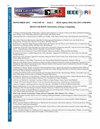Reclosers Modeling for Temporal Simulation of Distribution Networks in Simulink/ Matlab
IF 1.3
4区 工程技术
Q3 COMPUTER SCIENCE, INFORMATION SYSTEMS
引用次数: 0
Abstract
Over the past few years, Brazils increasing dependence on electricity has caused a continuous growth in demand and, therefore, the need to guarantee long-term energy supply to costumers. Hence, studying the devices that are responsible ensuring this continuity is critical since the improper operation of this equipment can reduce the reliability of the electrical energy distribution system, therefore requiring detailed study that incorporates simulations, modeling, and analysis of response capacity in the face of real loads. Simulink/Matlab is one of the most widely used software programs in academia. However, it does not have readymade templates for protection system equipment such as relays, fuses, and reclosers. Herein, the aim is to model the digital recloser using the S-function block of Simulink/Matlab. The proposed model for the recloser follows the configurations required by Brazilian electricity distribution companies, i.e. four operations divided into fast and slow, the latter one being responsible for permanently opening the section of the system on fault. To validate the modeled device, the IEEE 34-bar system was used, in which several operational cases were considered. The results obtained show that the proposed digital recloser model performed successfully proved to be a promising proposal for protection studies of power distribution systems.在 Simulink/ Matlab 中为配电网络的时态仿真建立重组器模型
在过去几年中,巴西对电力的依赖性不断增加,导致需求持续增长,因此需要保证向用户长期供应能源。因此,对负责确保这种连续性的设备进行研究至关重要,因为这些设备的不正常运行会降低配电系统的可靠性,因此需要进行详细研究,包括模拟、建模和分析面对实际负荷时的响应能力。Simulink/Matlab 是学术界使用最广泛的软件程序之一。然而,它并不具备继电器、熔断器和重合器等保护系统设备的现成模板。本文旨在使用 Simulink/Matlab 的 S 函数块为数字重合器建模。所提议的重合器模型遵循巴西配电公司所要求的配置,即分为快速和慢速的四种操作,后一种操作负责永久性地打开发生故障的系统部分。为了验证建模设备,使用了 IEEE 34bar 系统,其中考虑了几种运行情况。结果表明,所提出的数字重合器模型已成功应用于配电系统的保护研究中,并被证明是一项很有前途的建议。
本文章由计算机程序翻译,如有差异,请以英文原文为准。
求助全文
约1分钟内获得全文
求助全文
来源期刊

IEEE Latin America Transactions
COMPUTER SCIENCE, INFORMATION SYSTEMS-ENGINEERING, ELECTRICAL & ELECTRONIC
CiteScore
3.50
自引率
7.70%
发文量
192
审稿时长
3-8 weeks
期刊介绍:
IEEE Latin America Transactions (IEEE LATAM) is an interdisciplinary journal focused on the dissemination of original and quality research papers / review articles in Spanish and Portuguese of emerging topics in three main areas: Computing, Electric Energy and Electronics. Some of the sub-areas of the journal are, but not limited to: Automatic control, communications, instrumentation, artificial intelligence, power and industrial electronics, fault diagnosis and detection, transportation electrification, internet of things, electrical machines, circuits and systems, biomedicine and biomedical / haptic applications, secure communications, robotics, sensors and actuators, computer networks, smart grids, among others.
 求助内容:
求助内容: 应助结果提醒方式:
应助结果提醒方式:


